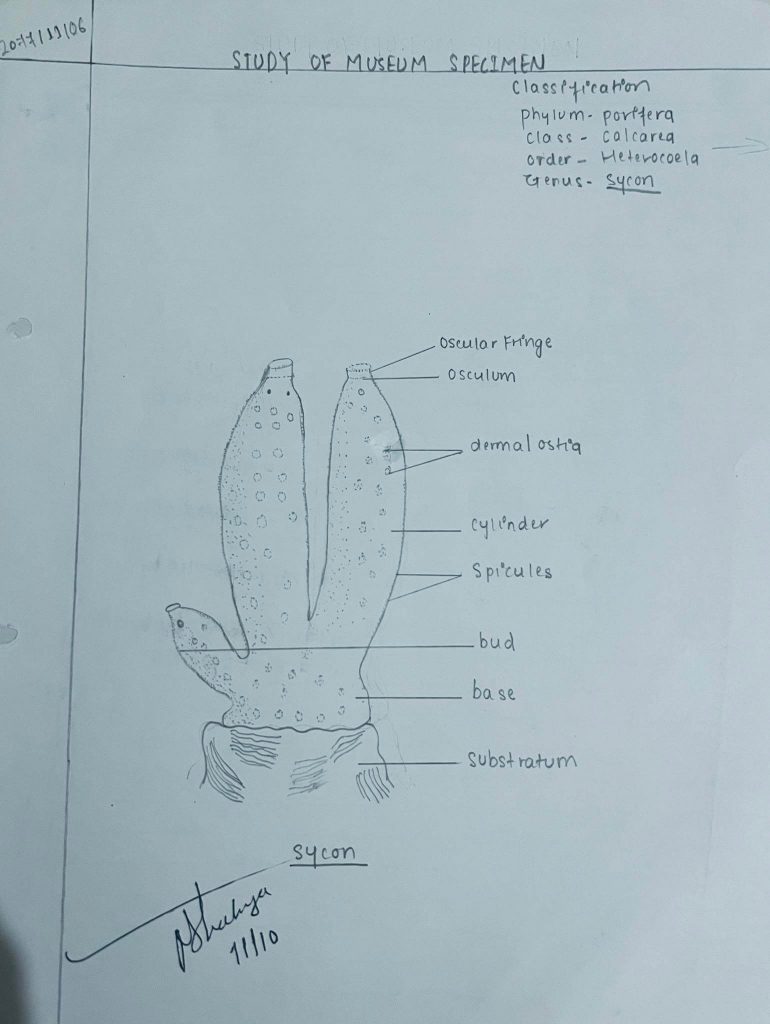Comment of Sycon
Distribution:
The North Atlantic coasts are home to an abundance of sycon, which is widely spread.
Habit and Habitat:
Sycon is a small, solitary or colonial marine sponge. It is a branching solitary or colonial marine sponge found attached to rocks and other substrate in shallow water.
Comments:
1. Sponge is the popular name for sycon.
2. The sycon’s body is a thin, vase-shaped cylinder with a diameter of 5 to 6 mm and a length of 20 to 30 mm.
2. Numerous pores on the body’s surface are referred to as ostia.
3. Only the radial canal is lined with choanocytes, or flagellated cells.
4. The Canal System is syconoid in nature.
5. It can reproduce asexually as well as sexually. Budding and regeneration are two methods of asexual reproduction. The sexual reproduction process uses sperm and ova.
6. It has a hermaphrodite genus.
7. The body is made up of the spongocoel’s inner, flattened epithelium, middle mesenchymal tissue, and outside epithelium.
Economic Importance:
Sycons are significant because they provide food for marine life, provide habitat for that life, and can injure sessile organisms and underwater formations.
Study of permanent slide(Porifera) T.S. of sycon:
1. Ectoderm, mesenchyme, and endoderm make up the body wall, which encloses the radial and incurrent canals.
2. The body’s surface and internal canals are entirely covered in ectoderm. It is made up of pinacocytes.
3. Calcareous spicules, amoebytes, collencytes, and archaeocytes make up the gelatinous layer known as mesenchyme.
4. A single layer of flagellated collar cells, also known as choanocytes, makes up the endoderm. Radial canals are lined with it.
5. An apopyle in each radial canal allows access to the spongocoel, a sizable central cavity.
6. A syconoid form of canal system.Flat epithelium lines the spongocoel, or sponge.
8. Radial canals use prosopyles to connect with the wrong canals.
Diagram of Sycon(Porifera):

